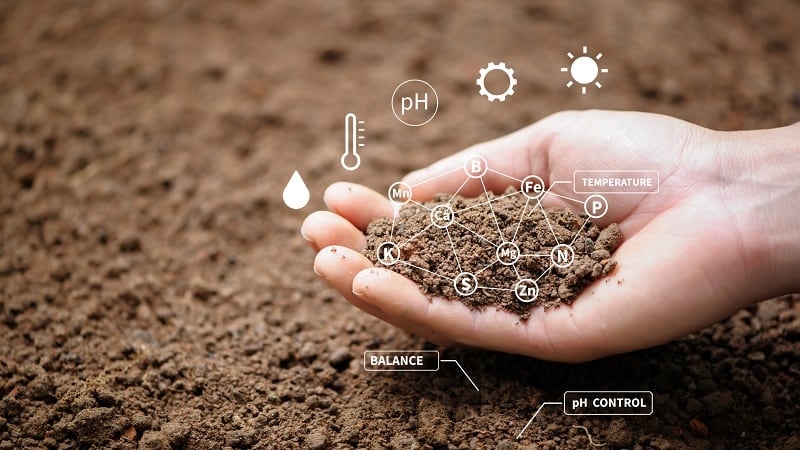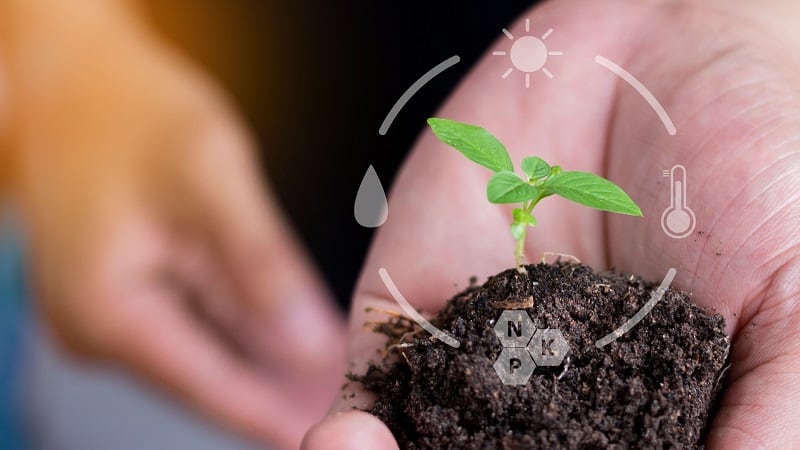Soil health across the U.S. has been on the decline for years, but crop input advancements are leading the way for healthier soil and lower input costs for growers, John Kelly, commercial agronomist at Redox, told AgTechNavigator.
Soil health on farmland is declining due to acidification, erosion, and salinization, as well as the lack of nitrogen and phosphorus, according to University of Colorado Boulder data from 2021. A third of the fertiliser used in U.S. corn production is making up the difference in soil health, costing growers more than $500 million a year, the university added.
Traditional nitrogen fertilisers are to blame for the lose of organic matter, which hinders optimal crop performance, Kelly noted.
“There is a general consensus amongst all universities and third parties that our soil health is in decline. Likewise, we have maxed out genetics. We have maxed out conventional fertilisation. Our yields are actually on a very slow decline as well. Couple that with the fact that we need to predict we need to produce 50% more food to support our growing population in the next 50 or so years, it highlights an issue, which is we have to do more and better with the resources we have now,” Kelly elaborated.
Despite a consensus on the state of soil health, the ag industry is split on the best way to restore soil health, Kelly admitted. Redox is improving soil health by focusing on three key areas: addressing the fundamental chemistry of the soil (i.e., the pH level of the soil), promoting optimum root development, and managing the resulting biology.
“If we keep doing what we are doing, we are going to keep getting what we are getting. ... We have to be very selective in the inputs we apply. Those that are detrimental to soil biology — to organic matter — are going to take us backwards. But if you address chemistry, root development, and the biology that follows — those three factors — we see really consistent improvement,” Kelly emphasized.
How Redox is improving soil, plant health
Redox is using that three-pronged approach to developing its fertilisers and crop inputs, which are focused on soil health, group development, abiotic stress defense, and nutrient optimization and often a combination of those benefits, Kelly noted. For instance, Redox’s Mainstay Calcium products strengthens root tips and improves soil moisture and structure, Kelly added.
“It is an interesting time to introduce technology into the market in that there are record-high costs for growers, and returns are not good. The price per bushel of soybeans or corn — if you look at the average yields depending on the farm structure — are likely not returning a profit."
John Kelly, commercial agronomist at Redox Bio-Nutrients
Recently, Redox’s Mainstay Calcium 2.0 achieved the Certified Biostimulant label from The Fertilizer Institute, which is a rigorous program that tests for quality, performance, and consistency, the company shared in a press release.
“Calcium is critical to cell wall strength and integrity in the plant, and that can have many implications for crop performance — from the firmness of fruit to the shelf life of fruit to the integrity of corn stock,” he elaborated.
Also, Redox’s botanical extract biostimulant RDX-N is improving nitrogen utilization and cutting fertiliser dependency in half, according to third-part analysis, Kelly noted.
U.S. growers are facing higher input costs and compressed operating margins, but these newer bio-based crop inputs are offering some relief to farmers, he said.
Given the market conditions, developing and launching new ag products can be tricky, which is why Redox launched a 500-acre research farm this year to test products and inform the company’s innovation pipeline, he added.
“It is an interesting time to introduce technology into the market in that there are record-high costs for growers, and returns are not good. The price per bushel of soybeans or corn — if you look at the average yields depending on the farm structure — are likely not returning a profit. So we have to have a laser focus on when, how, where and why we are going to go into that market,” Kelly elaborated.




